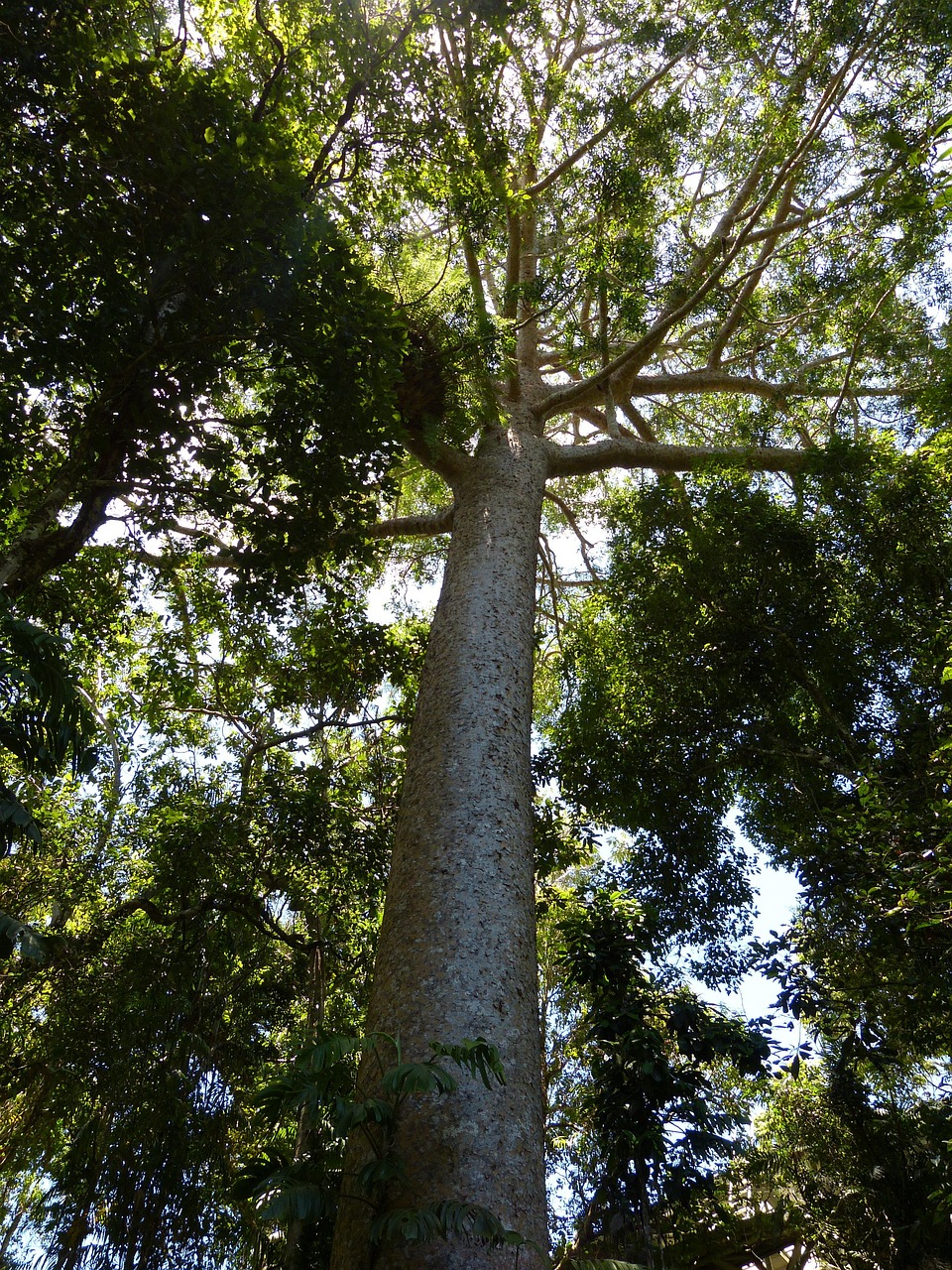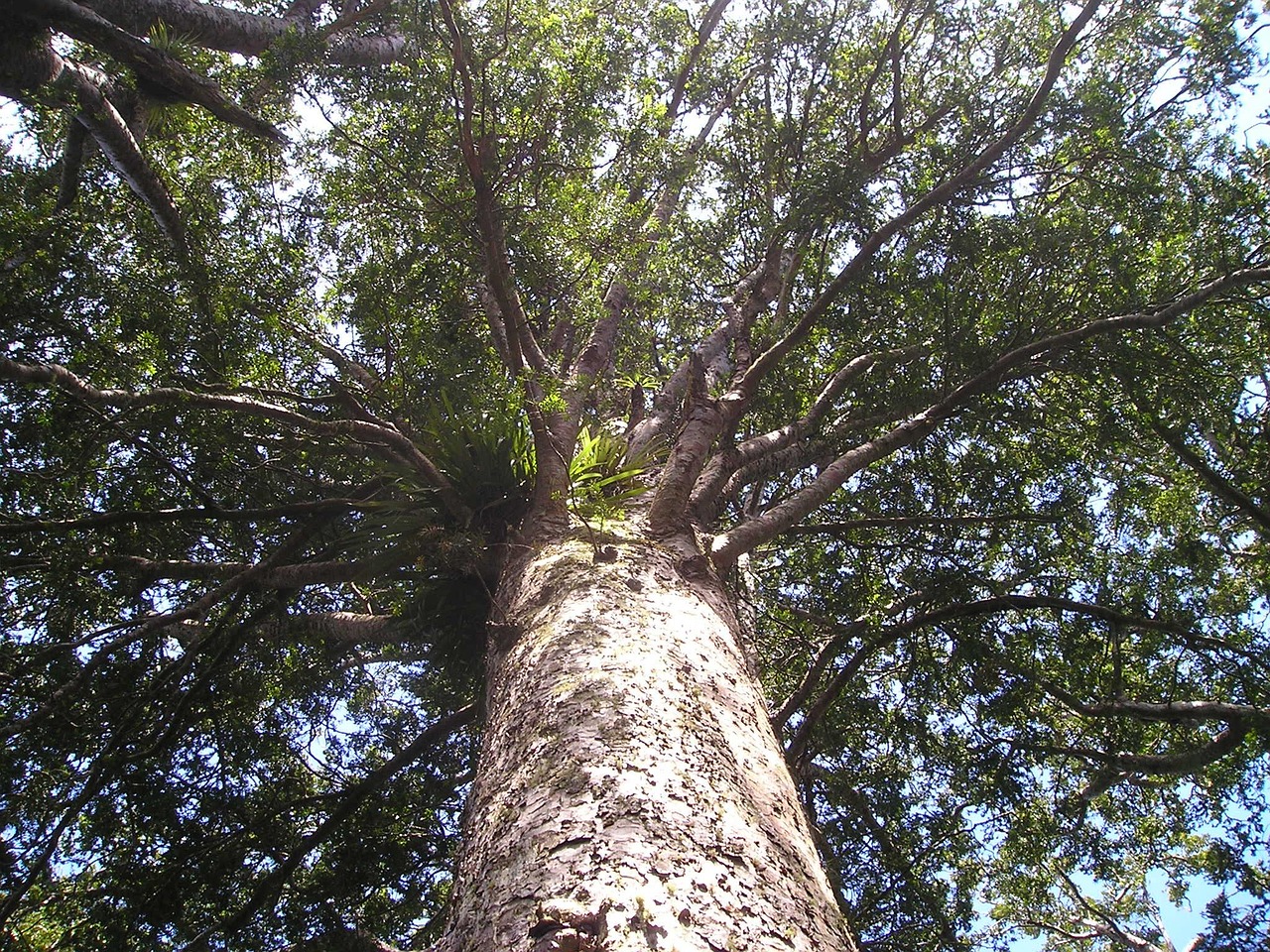Kauri Trees: The Ancient Wonders You Can Grow at Home
Kauri trees are magnificent ancient conifers native to New Zealand. Known for their towering height and impressive trunk width, these trees can live for over a thousand years. Growing a Kauri tree at home is not only possible but also a rewarding endeavor for gardening enthusiasts.
The Kauri tree, scientifically known as Agathis australis, is celebrated for its unique characteristics. It can reach heights of up to 50 meters (164 feet) and have a trunk that can measure over 4 meters (13 feet) in diameter. These trees are not just visually stunning; they also play a crucial role in their ecosystem. Kauri trees provide habitats for various species, support biodiversity, and are significant in Maori culture.

Understanding the history of the Kauri tree adds depth to its appeal. Once abundant across New Zealand, extensive logging in the 19th century drastically reduced their population. Conservation efforts are now in place to protect remaining trees and ensure their survival for future generations. This rich history makes planting a Kauri tree at home an act of preservation as well as a chance to connect with nature.
Features of Kauri Trees
Kauri trees are unique not only in their size but also in their physical attributes. Here are some key features that make them special:
| Feature | Description |
|---|---|
| Height | Can grow up to 50 meters (164 feet). |
| Trunk Diameter | May exceed 4 meters (13 feet) in diameter. |
| Lifespan | Can live for over a thousand years. |
| Leaves | Long, narrow leaves that form a dense crown. |
| Flowers | Produce small, fragrant flowers that attract pollinators. |
These features not only contribute to the aesthetic value of Kauri trees but also play an essential role in their survival and adaptation. Their height allows them to capture sunlight effectively, while their thick trunks store water and nutrients vital for growth.
Moreover, Kauri trees possess a unique bark structure that protects them from pests and diseases. However, they face threats such as Phytophthora Agathidicida, a soil-borne pathogen that affects their health. This highlights the importance of understanding the requirements for growing Kauri trees at home to ensure they thrive.
Growing Kauri Trees at Home

If you are interested in cultivating a Kauri tree, it is essential to consider several factors to create a suitable environment. First, Kauri trees require well-drained soil. They thrive in sandy or loamy soil types that do not retain excessive moisture. Additionally, providing adequate sunlight is crucial, as these trees prefer full sun exposure.
When planting a Kauri tree, consider the following steps:
- Select a sunny location with plenty of space for growth.
- Prepare the soil by mixing in organic matter to improve drainage.
- Water the sapling regularly while ensuring the soil is not soggy.
- Monitor for pests and diseases to maintain tree health.
The journey of growing a Kauri tree can be fulfilling. With proper care and attention, you can cultivate these ancient wonders at home, contributing to the preservation of this majestic species.
Care and Maintenance of Kauri Trees

Once you have successfully planted your Kauri tree, ongoing care is essential for its growth and health. Kauri trees are relatively low-maintenance, but they do require specific attention to thrive in a home environment. Here are the key aspects of caring for your Kauri tree:
Watering
Watering is one of the most critical factors in the health of your Kauri tree. While young saplings need more frequent watering, adult trees are more resilient. Here are some tips for effective watering:
- Water young trees deeply once or twice a week during dry spells.
- For mature trees, monitor soil moisture and water sparingly to avoid overwatering.
- Ensure that the water penetrates deep into the soil to encourage root development.
Fertilization
Kauri trees benefit from fertilization, particularly during their growing season in spring and early summer. Using organic fertilizers can provide essential nutrients without harming the environment. Consider the following:
- Apply a balanced slow-release fertilizer once a year.
- Use compost to enrich the soil around the tree base.
- Avoid excessive nitrogen, as it can promote foliage growth at the expense of root strength.
Pest and Disease Management
Kauri trees can be susceptible to various pests and diseases. Early detection and management are crucial for maintaining their health. Some common issues include:
- Phytophthora Agathidicida: This soil-borne pathogen is especially harmful to Kauri trees. Avoid planting in poorly drained soils and ensure adequate spacing between trees.
- Insect Pests: Monitor for pests like scale or aphids. Use insecticidal soap or neem oil as a natural remedy.
- Diseased Foliage: Remove any dead or diseased leaves promptly to prevent the spread of infection.
Environmental Considerations
When growing Kauri trees at home, it is vital to consider their environmental impact and requirements. These trees thrive in specific conditions that mimic their natural habitat in New Zealand. Here are some factors to keep in mind:
Soil Quality
The quality of soil plays a significant role in the growth of Kauri trees. They prefer well-drained, nutrient-rich soils. Consider these soil guidelines:
- Avoid heavy clay soils that retain water.
- Incorporate organic matter, such as compost or aged manure, to improve soil texture.
- Test soil pH levels; Kauri trees prefer slightly acidic to neutral pH (around 5.5 to 7.0).
Sunlight Requirements
Kauri trees prefer full sun but can tolerate partial shade. Ensure that your planting location receives ample sunlight. Consider these tips:
- Avoid planting near tall structures or other trees that may block sunlight.
- If planting multiple trees, maintain adequate spacing to allow light penetration.
- Monitor growth patterns and adjust surrounding vegetation if necessary.
Propagation Methods for Kauri Trees
If you want to expand your collection of Kauri trees, understanding propagation methods is essential. Here are common techniques used to propagate Kauri trees:
Seed Propagation
Growing Kauri trees from seeds can be rewarding but requires patience. Here’s how to do it:
- Seed Collection: Collect seeds from mature cones during late summer or early autumn.
- Seed Preparation: Soak seeds in water for 24 hours to improve germination rates.
- Sowing Seeds: Plant seeds in seed trays filled with well-draining potting mix.
- Provide Warmth and Moisture: Keep the trays in a warm location and maintain moisture until germination occurs, usually within a few weeks.
Cuttings
An alternative method to propagate Kauri trees is through cuttings. This method can be more challenging but can yield successful results:

- Select a Healthy Cutting: Choose a healthy branch from an existing tree, approximately 15-20 cm long.
- Treat the Cutting: Dip the cut end in rooting hormone to encourage root development.
- Planting: Place the cutting in well-draining soil and water lightly.
- Create Humidity: Cover with a plastic bag or a humidity dome to maintain moisture until roots develop.
Each propagation method has its advantages and challenges. Choose one that suits your gardening style and resources available.
Common Challenges in Growing Kauri Trees
While Kauri trees can be a rewarding addition to your garden, they do face several challenges that gardeners should be aware of. Understanding these challenges can help you take preventive measures and ensure the long-term health of your trees.
Soil Drainage Issues
Kauri trees are particularly sensitive to waterlogged soils. Poor drainage can lead to root rot and other serious conditions. To mitigate this problem:
- Ensure that the planting site has good drainage. If necessary, consider raised beds or mounds to improve soil runoff.
- Regularly check the moisture level in the soil, especially after heavy rains.
- If you notice standing water, amend the soil with organic material to enhance drainage.
Climate Adaptability
Kauri trees thrive in specific climatic conditions. They prefer mild, humid climates similar to their native New Zealand environment. Here are tips for managing climate challenges:
- In colder regions, plant Kauri trees in sheltered locations to protect them from frost.
- During particularly hot summers, provide shade for younger trees to prevent heat stress.
- Monitor humidity levels; if the air is too dry, consider using a garden misting system.
Pest Infestations
Pests can pose significant threats to Kauri trees. Regular monitoring and prompt action are essential for pest control. Some common pests include:
- Scale Insects: These insects can sap the tree’s strength. Use horticultural oil to control their population.
- Aphids: These pests can cause leaf curling and stunted growth. Introduce natural predators like ladybugs or use insecticidal soap.
- Caterpillars: They can defoliate Kauri trees. Hand-picking or using organic pesticides can help manage their numbers.
Benefits of Growing Kauri Trees
Despite the challenges, there are numerous benefits to growing Kauri trees at home. These majestic trees can enhance your garden and contribute positively to the environment. Here are some notable benefits:
Environmental Contributions
Kauri trees play a vital role in their ecosystems. By planting them at home, you contribute to various environmental benefits:
- Biodiversity Support: Kauri trees provide habitats for birds, insects, and other wildlife, promoting biodiversity.
- Carbon Sequestration: As large trees, Kauris absorb carbon dioxide, helping mitigate climate change.
- Soil Health Improvement: The roots of Kauri trees can enhance soil structure and promote healthier soil ecosystems.
Aesthetic Appeal
Kauri trees are not just functional; they also add significant aesthetic value to gardens. Consider these aspects:
- Majestic Appearance: Their towering height and unique bark make them a stunning focal point in any landscape.
- Seasonal Interest: Kauri trees have evergreen foliage that remains vibrant year-round, providing continuous visual interest.
- Cultural Significance: In Maori culture, Kauri trees hold sacred importance. Growing one can serve as a connection to this rich heritage.
Designing Your Garden with Kauri Trees
Integrating Kauri trees into your garden design requires thoughtful planning. Here are some tips for creating a harmonious landscape:
Choosing Suitable Companion Plants
Selecting companion plants that thrive alongside Kauri trees is essential for maintaining balance in your garden. Consider these options:
- Natives and Adapted Species: Choose plants native to New Zealand or those that adapt well to similar conditions.
- Drought-Tolerant Plants: Since Kauri trees prefer well-drained soils, consider adding drought-resistant species that won’t compete for moisture.
- Ground Covers: Use low-growing ground covers that do not overshadow young Kauri saplings but help prevent soil erosion.
Spacing and Layout
The layout of your garden is crucial when planting Kauri trees. Here are guidelines for effective spacing:
- Allow ample space between Kauri trees and other plants to prevent competition for light and nutrients.
- Plan for their full mature size; consider how large they will grow over time before planting new vegetation nearby.
- Create pathways or open spaces around the trees for easy access and maintenance.
The careful integration of Kauri trees into your garden not only enhances its beauty but also ensures that these ancient wonders thrive for years to come.
Additional Resources for Kauri Tree Enthusiasts
As you embark on your journey of growing Kauri trees, you may find it helpful to access additional resources for further learning and support. Here are some recommended resources:
Books
Several books provide in-depth information on Kauri trees, their ecology, and cultivation techniques. Consider exploring:
- The Kauri: A Natural History of the Kauri Tree by J. M. L. H. W. C. M. C. H. H. H. G. B.
- New Zealand Trees: A Comprehensive Guide by J. T. M. S.
- The Complete Guide to Growing Trees by J. Smith.
Online Forums and Communities
Joining online gardening forums or communities can enhance your knowledge and connect you with other Kauri tree enthusiasts. Some popular platforms include:
- GardenWeb: A forum where gardeners share tips and experiences.
- Reddit’s r/gardening: A community for discussing various gardening topics, including tree cultivation.
- Facebook Groups: Search for local or specialized gardening groups focused on native trees or Kauri trees.
Local Botanical Gardens
Visiting botanical gardens can provide valuable insights into growing Kauri trees. Many gardens feature native plant sections and offer workshops or guided tours. Here are a few suggestions:
- The Auckland Domain: Home to a large collection of native New Zealand flora.
- The Wellington Botanic Garden: Known for its diverse plant species, including native trees.
- The Christchurch Botanic Gardens: Offers educational programs on native plants and trees.
Final Thoughts
Kauri trees are truly remarkable living beings that can transform any garden into a lush and vibrant sanctuary. Their majestic presence not only enhances the beauty of your landscape but also contributes positively to the environment by supporting biodiversity and sequestering carbon.
Growing Kauri trees at home requires commitment and care. By understanding their unique needs—such as soil quality, sunlight exposure, and pest management—you can create a thriving habitat for these ancient wonders. Integrating them thoughtfully into your garden design ensures that they coexist harmoniously with other plants, enhancing the overall ecosystem.
Through proper propagation techniques, water management, and disease prevention strategies, you can help ensure that your Kauri trees flourish for generations to come. Additionally, engaging with community resources, literature, and local botanical gardens can further enhance your gardening experience and knowledge.
Ultimately, growing Kauri trees is more than just cultivating a plant; it is about fostering a connection with nature and preserving an important piece of ecological heritage. Embrace this journey, and enjoy the beauty and wisdom that Kauri trees bring to your home.
